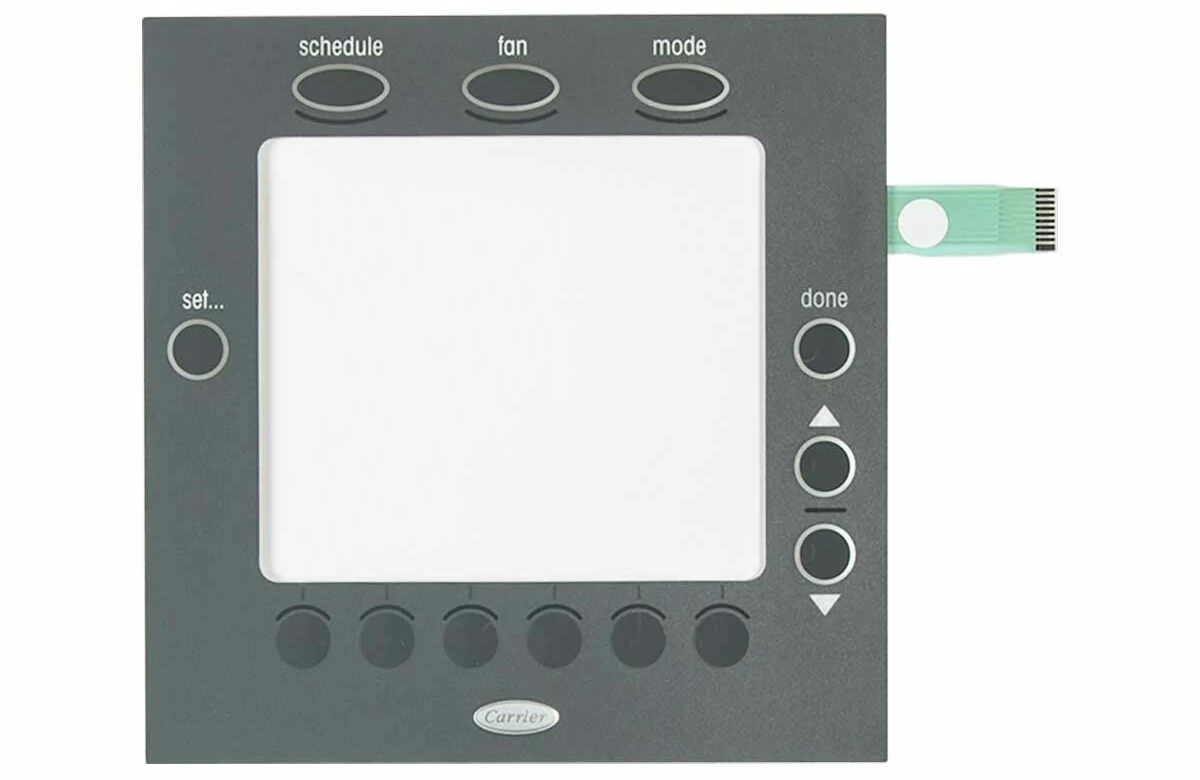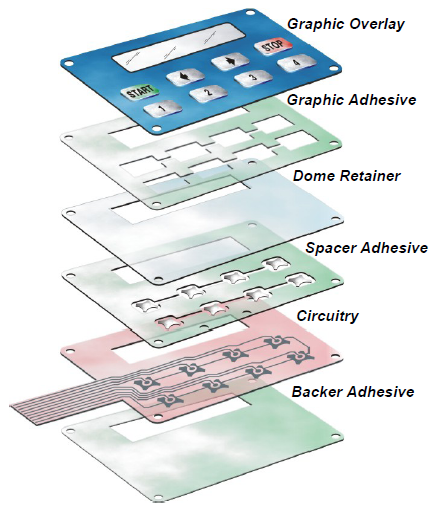Discover Just How Membrane Switches Feature and Their Duty in Modern Electronic Devices
Membrane Switches stand for a sophisticated assimilation of innovation and design within the realm of modern-day electronics, offering as crucial interfaces in countless gadgets. Comprehending the ins and outs of Membrane switch performance and their more comprehensive ramifications in enhancing individual experience welcomes more expedition into their style, benefits, and the innovative growths shaping their future in modern technology.
What Are Membrane Buttons?

Membrane buttons are distinguished by their durability and resistance to environmental factors, such as dust, moisture, and extreme temperatures. They can be personalized with different graphics, shades, and tactile responses alternatives, boosting customer experience while keeping aesthetic allure - membrane switches. The unification of published circuits enables for smooth assimilation right into gadgets, boosting general performance.
The flexibility of Membrane switches is obvious in their capability to support both complicated and straightforward control features. They can include attributes such as LED indicators and touch-sensitive innovation, catering to details user needs. As technology remains to evolve, Membrane Switches stay crucial for enabling user-friendly and efficient interface, consequently playing a crucial role in the advancement of modern-day electronic tools.
Components of Membrane Switches
Membrane buttons are composed of several vital elements that work together to create a reliable and functional interface. The primary components include the graphic overlay, glue layer, spacer layer, and conductive traces.
The graphic overlay serves as the interface, typically published on a versatile substratum such as polyester or polycarbonate. This layer not just offers visual charm yet likewise includes tactile feedback, aesthetic hints, and protective functions. Under the graphic overlay lies the sticky layer, which secures the button to the device and ensures sturdiness against environmental stress and anxieties.
The spacer layer is vital for preserving the essential gap between the graphic overlay and the circuit layer. When stress is applied, this void permits for the activation of the button. The conductive traces, usually made from silver or carbon, create the electric pathways that finish the circuit when the switch is engaged.
Furthermore, a support layer may be consisted of for architectural assistance and insulation. These components team up seamlessly, making sure that Membrane buttons are both resistant and straightforward, making them vital in different contemporary electronic applications.
Exactly How Membrane Switches Job
Just how do Membrane Switches feature efficiently within digital gadgets? Membrane Switches operate the principles of pressure-sensitive modern technology, making use of a layered construction that includes visuals overlays, adhesive layers, and conductive aspects. When an individual applies pressure to the switch, the leading layer warps, allowing the conductive aspects underneath to make get in touch with and complete an electrical circuit. This activity causes the preferred function within the tool.
The design of Membrane switches is critical for their efficient procedure (membrane switches). The layers are diligently engineered to provide tactile feedback, toughness, and resistance to ecological aspects such as dampness and dust. The inclusion of domes-- small, increased areas within the switch-- improves responsive action, offering individuals with a noticeable click feeling upon activation
In addition, Membrane switches can be customized in regards to size, form, and graphics, making them suitable see for different applications. They are usually utilized in control panels, medical gadgets, and customer electronic devices because of their sleek design and reliability. In general, the reliable functioning of Membrane switches is crucial in improving individual communication and making sure seamless procedure in modern-day digital devices.

Applications in Modern Devices
Utilizing their special layout and capability, Membrane switches have ended up being indispensable parts in a variety of contemporary digital devices. These functional user interfaces are utilized in consumer electronic devices, commercial devices, clinical tools, and auto controls, providing seamless customer interaction.
In customer electronic devices, Membrane switches are typically located in home appliances like microwaves, cleaning devices, and various other family gadgets, where they enable instinctive control with a smooth account. Their low-profile style helps with assimilation right into portable gadgets, boosting visual charm without jeopardizing functionality.
In industrial applications, Membrane Switches offer as control panels for machinery, using longevity and resistance to severe environments. Their capability to hold up against wetness and contaminants makes them optimal for usage in manufacturing and handling industries.
Clinical tools also take advantage of Membrane buttons, which are developed to be simple to clean and keep, making sure hygiene in scientific settings. They are typically used in analysis devices, patient surveillance systems, and mobile medical gadgets, where dependability is paramount.
Benefits of Membrane Switches
Among the vital benefits of Membrane switches is their versatility, which enables them to be customized for a range of applications across several industries. These switches can be developed in numerous sizes and shapes, suiting distinct item requirements while supplying smooth assimilation right into devices. Their thin profile allows a portable and sleek design, frequently boosting the aesthetic charm of digital items.
Another significant benefit is their longevity - membrane switches. Membrane buttons are commonly immune to dust, wetness, and chemicals, making them perfect for harsh environments. This durability expands their life expectancy compared to traditional mechanical buttons, minimizing the requirement for frequent substitutes
In addition, Membrane Switches deal cost-effectiveness. The production procedure involves printing technologies that lessen manufacturing expenses, specifically for huge runs. This price, incorporated with low upkeep demands, makes them an appealing alternative for makers.

Conclusion
In final thought, Membrane Switches represent a considerable advancement in user interface modern technology within modern-day electronic devices. Their layered building and construction, pressure-sensitive procedure, and flexibility to various applications emphasize their relevance across multiple industries. The sturdiness and environmental resistance of Membrane Switches further enhance their see this allure, making them a preferred choice for suppliers seeking reliable and personalized remedies. As the demand for instinctive and durable user interfaces proceeds to grow, the function of Membrane buttons in shaping individual experience will unquestionably expand.
Membrane Switches represent an advanced integration of technology and layout within the realm of modern-day electronic devices, serving as crucial user interfaces in various tools.In the realm of contemporary electronics, Membrane Switches offer as important components that help with user interaction with devices. As modern technology proceeds to evolve, Membrane Switches stay vital for making it possible for intuitive and efficient individual interfaces, consequently playing an essential function see this in the development of modern electronic tools.
Exactly how do Membrane Switches function properly within digital devices? Overall, the efficient performance of Membrane buttons is critical in boosting individual interaction and making sure smooth operation in modern-day electronic tools.